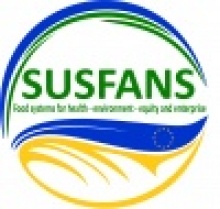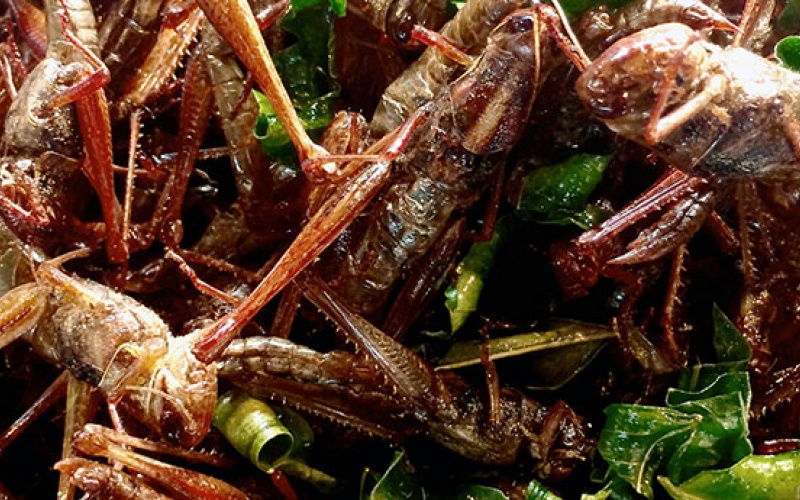WP 5: Case studies
General Information
The chief objective of Work package 5 is to illustrate and validate sustainability metrics for assessing FNS in major current food supply chains: livestock and fish, and fruit and vegetables, as proof-of-principle. The case studies-proof of principle approach is in the centre of the project.
The Work package will identify a set of innovative sustainability pathways as a contribution to defining scenarios for modeling future FNS in two perspectives:
- for the livestock-fish supply chain as producers perspective and
- for the fruit-vegetable chain as consumers perspective.
Furthermore, the work package 5 assess the impacts of applying enhanced sustainability metrics at interlinked hierarchical levels of these innovative development pathways in the livestock-fish and fruit-vegetables supply chain using the SUSFANS toolbox (WP9).
Latest Publication
Deliverable 5.4: Sustainability impacts of potential innovations in the supply chain of livestock and fish, and fruit and vegetables, and sustainable future diets (Report on T5.4)
To assess different possible future directions for the EU food system, potential innovations were identified towards achieving sustainable healthy diets within the EU. The innovations focused on two cases, the ‘livestock and fish case’ and the ‘fruit and vegetable case’. For both supply chains there are concerns regarding the current European diet (excessive consumption of livestock and too low consumption of fruit, vegetables and seafood). For animal production, i.e. livestock and seafood, environmental concerns (land use, GHG emissions, fish stock depletion etc.) are particularly pressing.
Take a lookDefining a land boundary for sustainable livestock consumption
The need for more sustainable production and consumption of animal source food (ASF) is central to the achievement of the sustainable development goals: within this context, wise use of land is a core challenge and concern. A key question in feeding the future world is: how much ASF should we eat? We demonstrate that livestock raised under the circular economy concept could provide a significant, nonnegligible part (9–23 g/per capita) of our daily protein needs (~50–60 g/per capita). This livestock then would not consume human‐edible biomass, such as grains, but mainly convert leftovers from arable land and grass resources into valuable food, implying that production of livestock feed is largely decoupled from arable land. The availability of these biomass streams for livestock then determines the boundaries for livestock production and consumption. Under this concept, the competition for land for feed or food would be minimized and compared to no ASF, including some ASF in the human diet could free up about one quarter of global arable land. Our results also demonstrate that restricted growth in consumption of ASF in Africa and Asia would be feasible under these boundary conditions, while reductions in the rest of the world would be necessary to meet land use sustainability criteria. Managing this expansion and contraction of future consumption of ASF is essential for achieving sustainable nutrition security.
Take a lookDeliverable 5.3: Innovation pathways towards more sustainable production and consumption in the fruit - vegetable supply chain and their uptake in the SUSFANS models
Fruit and vegetable consumption is below recommended levels and should increase to come closer to a more healthy and sustainable diet in Europe. The aim of this report is to identify innovation pathways in the fruit and vegetable chain from a consumer perspective. The deliverable shows the different elements of a consumer perspective, their relevance and above all the need to combine consumer, production and circular perspectives on innovation to support fruit and vegetables consumption. To understand or even stimulate consumption behaviour a wide array of drivers need to be taken into consideration, which relate to the individual (biological, demographics, psychological), the product, the interpersonal, physical environment and policy. These are represented in consumption-related innovations such as: targeting, motivating, contextual, communicating and acceptance of innovations; product related innovation such as: product, production, and package; and circular innovations (in particular around reducing food waste). This paper is meant to inspire, raise awareness, and continue the discussion on a strengthened consumer perspective in the innovation strategies, foresight and modelling work in SUSFANS.
Take a lookDeliverable 5.1: Baseline sustainability assessment of the current state of livestock/fish and fruit/vegetables supply chains
To assess different possible future directions for the EU food system, potential pathways based on a set of innovations need to be identified. The aim of WP5 is to define different pathways towards more sustainable and healthy diets within the EU, without negative implications in the rest of world. This first report of WP 5 makes the case for the two selected case studies based on the current situation, provides as first set of innovation pathways and explores the use of metrics in a spider diagram to assess sustainable FNS. The innovations focus on two cases, ‘livestock and fish case’ and ‘the fruit and vegetable case’. For both supply chains there are concerns regarding the current European diet (too high consumption of livestock and too limited consumption fruit, vegetables and seafood), whereas for livestock and fish production there are also pressing environmental concerns (land use, GHG emissions, fish stock depletion).
Take a look

